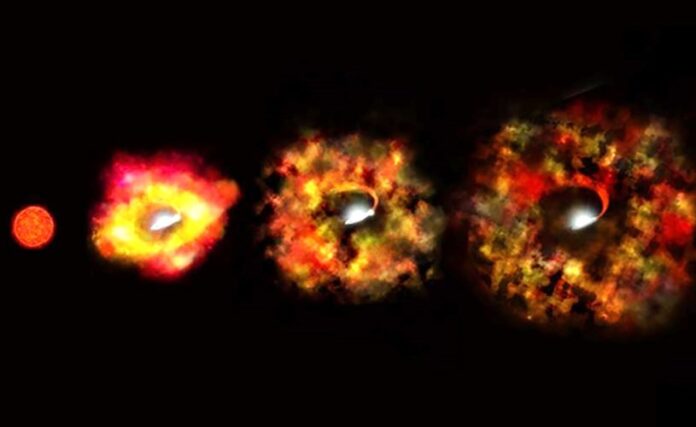In 2009, a giant star 25 times more massive than the Sun disappeared from space, but new research may have an answer to what really happened.
The star known as (N6946-BH1) has puzzled scientists since 2009, as it went through a period of brightness, as happens in a supernova, and its brightness increased to a million suns, and then it faded after that instead of exploding, according to the technology available at that time, reports Al-Anba daily.
When astronomers tried to see the star using the Large Binocular Telescope (LBT), Hubble, and the Spitzer Space Telescope, they could not see anything.
However, scientists have now been able to analyze the available data thanks to NASA’s James Webb Space Telescope and its NIRCam and MIRI instruments. The James Webb Telescope allowed scientists to see N6946-BH1, located in a galaxy 22 million light-years away. New images taken by the telescope using infrared imaging show a young star spewing out colored gas faster than sound.
The study, published on September 28 on the arXiv website, found a new theory about what might have happened, according to what the Russia Today news website reported, citing the British newspaper The Sun.
They explained that what looked like a bright star about to go supernova in 2009 was actually a star system that shines when two stars merge together.
After the stars merge together, they return to normal, which explains why they “disappear.”

















